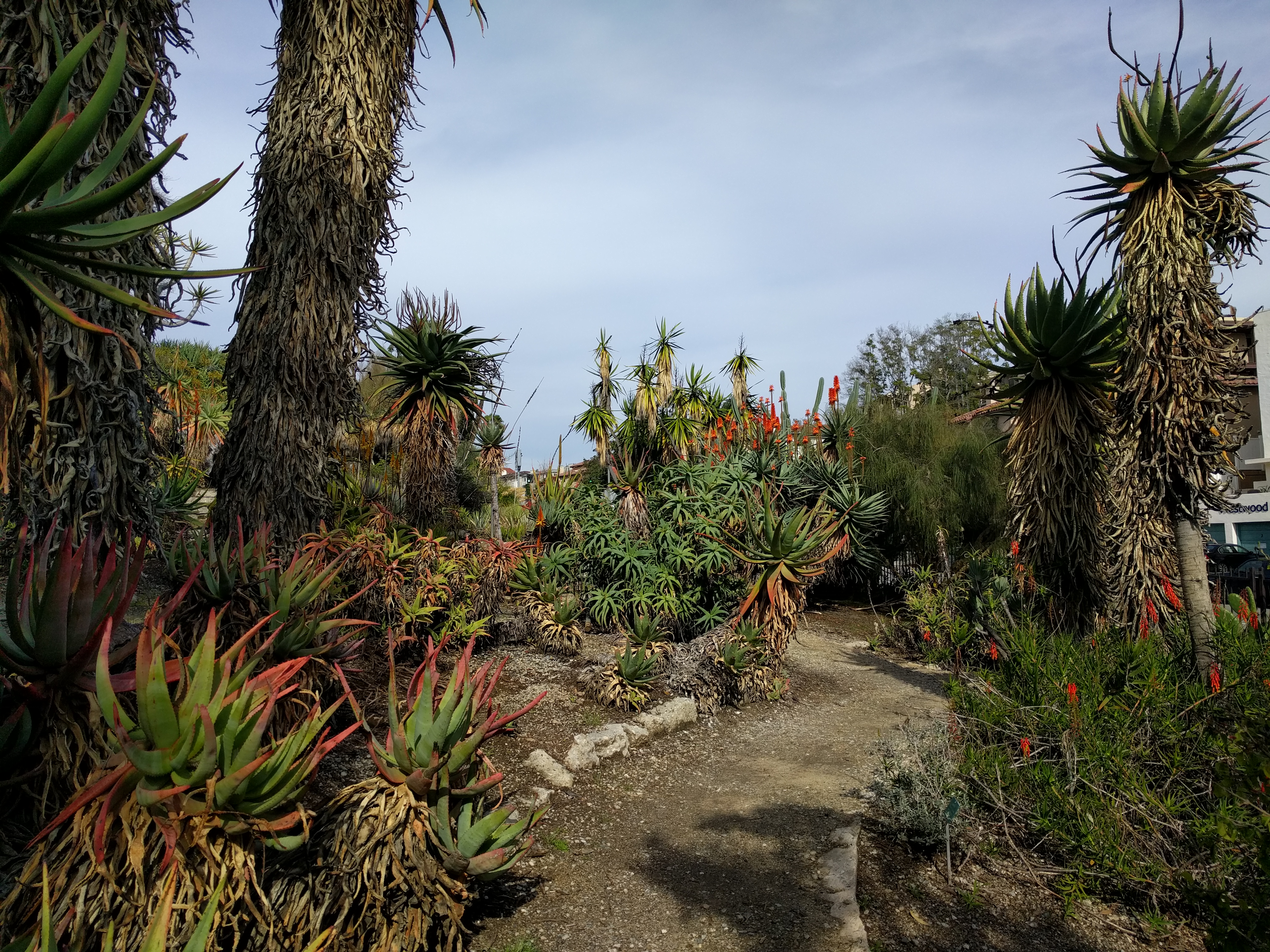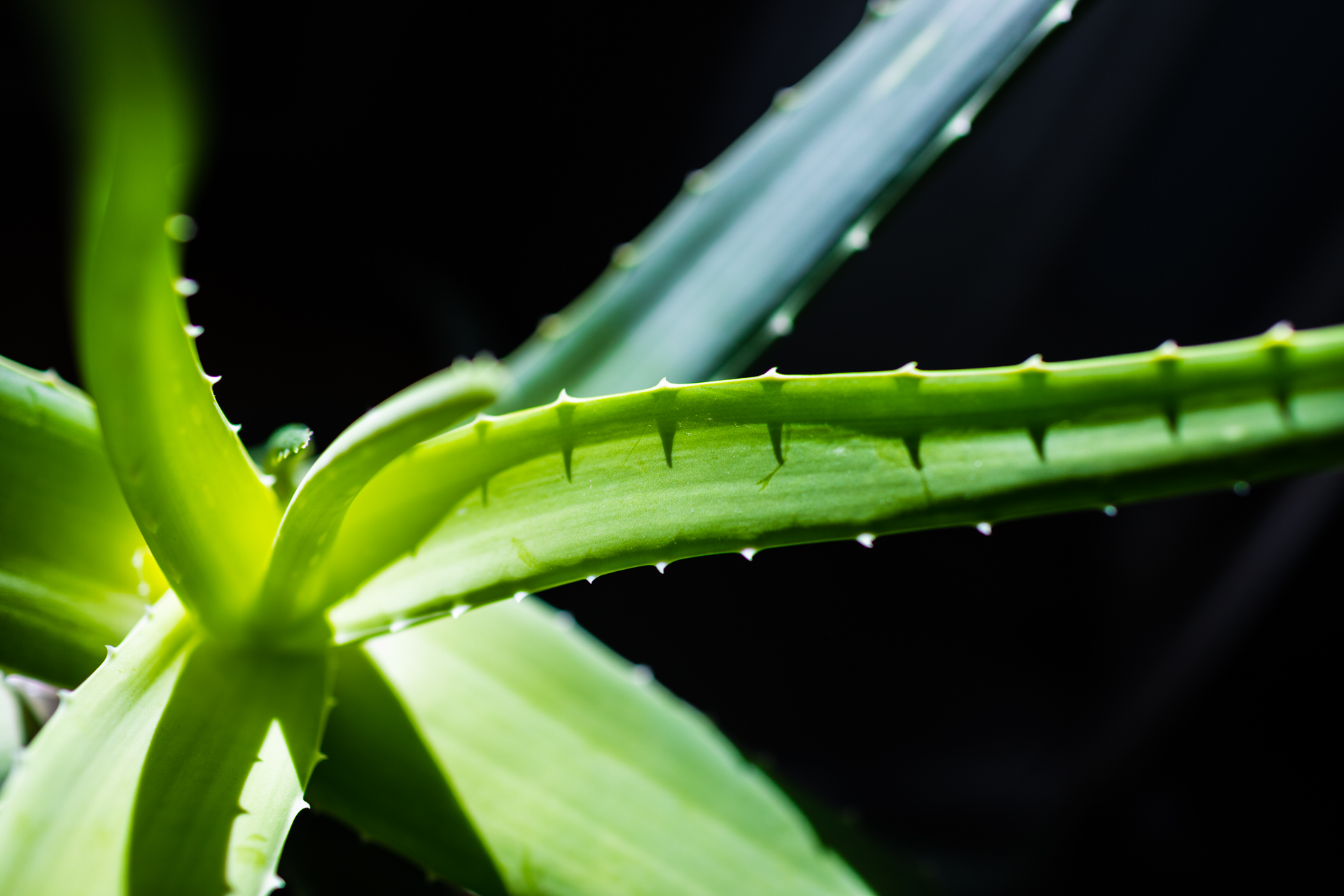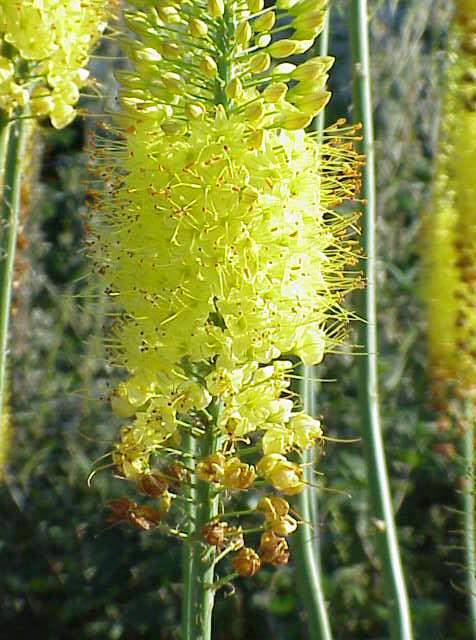|
Aloe
''Aloe'' (; also written ''Aloë'') is a genus containing over 650 species of flowering succulent plants.WFO (2022): Aloe L. Published on the Internet;http://www.worldfloraonline.org/taxon/wfo-4000001341. Accessed on: 06 Nov 2022 The most widely known species is ''Aloe vera'', or "true aloe". It is called this because it is cultivated as the standard source for assorted pharmaceutical purposes. Other species, such as '' Aloe ferox'', are also cultivated or harvested from the wild for similar applications. The APG IV system (2016) places the genus in the family Asphodelaceae, subfamily Asphodeloideae. Within the subfamily it may be placed in the tribe Aloeae.Stevens, P.F. (2001 onwards).Asphodelaceae. ''Angiosperm Phylogeny Website''. Retrieved 2016-06-09. In the past, it has been assigned to the family Aloaceae (now included in the Asphodeloidae) or to a broadly circumscribed family Liliaceae (the lily family). The plant '' Agave americana'', which is sometimes called "A ... [...More Info...] [...Related Items...] OR: [Wikipedia] [Google] [Baidu] |
Aloe Vera Houseplant
''Aloe'' (; also written ''Aloë'') is a genus containing over 650 species of flowering succulent plants.WFO (2022): Aloe L. Published on the Internet;http://www.worldfloraonline.org/taxon/wfo-4000001341. Accessed on: 06 Nov 2022 The most widely known species is ''Aloe vera'', or "true aloe". It is called this because it is cultivated as the standard source for assorted pharmaceutical purposes. Other species, such as ''Aloe ferox'', are also cultivated or harvested from the wild for similar applications. The APG IV system (2016) places the genus in the family Asphodelaceae, subfamily Asphodeloideae. Within the subfamily it may be placed in the tribe Aloeae.Stevens, P.F. (2001 onwards).Asphodelaceae. ''Angiosperm Phylogeny Website''. Retrieved 2016-06-09. In the past, it has been assigned to the family Aloaceae (now included in the Asphodeloidae) or to a broadly circumscribed family Liliaceae (the lily family). The plant ''Agave americana'', which is sometimes called "American ... [...More Info...] [...Related Items...] OR: [Wikipedia] [Google] [Baidu] |
Aloe Vera
''Aloe vera'' () is a succulent plant species of the genus '' Aloe''. It is widely distributed, and is considered an invasive species in many world regions. An evergreen perennial, it originates from the Arabian Peninsula, but grows wild in tropical, semi-tropical, and arid climates around the world. It is cultivated for commercial products, mainly as a topical treatment used over centuries. The species is attractive for decorative purposes, and succeeds indoors as a potted plant. It is used in many consumer products, including beverages, skin lotion, cosmetics, ointments or in the form of gel for minor burns and sunburns. There is little clinical evidence for the effectiveness or safety of ''Aloe vera'' extract as a cosmetic or topical drug, and oral ingestion has risk of toxicity. Etymology The genus name '' Aloe'' is derived from the Arabic word ''alloeh'', meaning "bitter and shiny substance" or from Hebrew ''ahalim'', plural of ''ahal''. The specific epithet '' ... [...More Info...] [...Related Items...] OR: [Wikipedia] [Google] [Baidu] |
Aloeae
Aloeae is a tribe of succulent plants in the subfamily Asphodeloideae of the family Asphodelaceae, consisting of the aloes and their close relatives. The taxon may also be treated as the subfamily Alooideae by those botanists who retain the narrower circumscription of Asphodelaceae adopted prior to the APG III system. Typically, plants have rosettes of more or less succulent leaves, with or without a distinct stem. Their flowers are arranged in racemes and tend to be either small and pale, pollinated by insects, or larger and more brightly coloured, pollinated by birds. , 11 genera are recognized, most created since 2010 by splitting off another five genera from ''Aloe'' and another two from ''Haworthia''. Only two genera, ''Aloe'' and '' Aloidendron'', are native outside southern Africa, extending northwards to the Arabian Peninsula. Seven genera are restricted to South Africa, some with small ranges. Members of the Aloeae are cultivated by succulent plant enthusiasts; ''Alo ... [...More Info...] [...Related Items...] OR: [Wikipedia] [Google] [Baidu] |
Aloe Perfoliata
''Aloe perfoliata'', the rubble aloe or mitre aloe, is a hardy creeping aloe, found in rocky, mountainous areas throughout the Western Cape, South Africa. Naming and classification ''Aloe perfoliata'' was formerly known as ''Aloe mitriformis''. The physical appearance of this aloe varies greatly depending on environment, and consequently various sub-populations have previously often been mistaken for being separate species. The South African National Biodiversity Institute now recognizes that these are all members of the same species, ''Aloe perfoliata'', comprising what were previously known as ''Aloe mitriformis'', ''Aloe distans'', ''Aloe comptonii'', ''Aloe albispina'' and ''Aloe flavispina'' among others. This species is the most widespread of a group of closely related "Creeping Aloes" ('' Mitriformes''), including the cliff-hanging aloes ''A. meyeri'' and ''A. dabenorisana''(stemless), as well as spotted ''Aloe arenicola'' of the South African west coast and the unusual ' ... [...More Info...] [...Related Items...] OR: [Wikipedia] [Google] [Baidu] |
Aloe Ferox
''Aloe ferox'', commonly known as bitter aloe, is a species of flowering plant in the family Asphodelaceae. This woody aloe is indigenous to southern Africa. It is one of several ''Aloe'' species used to make bitter aloes, a purgative medication, and also yields a non-bitter gel that can be used in cosmetics. Description ''Aloe ferox'' is a tall, single-stemmed aloe, that can grow to in height. Its leaves are thick and fleshy, arranged in rosettes, and have reddish-brown spines on the margins with smaller spines on the upper and lower surfaces. The leaf surfaces of young plants are covered in spines; however, as they get taller and less vulnerable to grazing, the leaves begin to lose most of their spines except for those along the leaf margins. Plants in the western part of its natural range tend to keep more of their leaf surface spines. Its flowers are a uniform orange or red, and stand between above the leaves, in multi-branched inflorescences. It is a variable specie ... [...More Info...] [...Related Items...] OR: [Wikipedia] [Google] [Baidu] |
Aloe Succotrina
''Aloe succotrina'', the Fynbos aloe, is an aloe which is endemic to Cape Town and the south-western corner of the Western Cape, South Africa. Distribution ''Aloe succotrina'' is naturally found on the Cape Peninsula, and as far as Mossel Bay to the east. This aloe is common in Peninsula Sandstone Fynbos vegetation, and typically grows high up on cliff faces and rocky outcrops where seasonal fires do not reach it. It is one of the few Aloes that naturally occur in fynbos habitats - along with the Fan Aloe and '' Aloiampelos commixta'' of Table Mountain. It is one of only three aloes and their relatives, with ''Aloiampelos commixta'' and ''Aloe maculata'', that are indigenous to the city of Cape Town. Description The ''Aloe succotrina'' plant forms clusters of between diameter, with its leaves forming dense rosettes. In winter when it flowers (June to September) it produces a tall raceme, bearing shiny red flowers that are pollinated by sunbirds. Taxonomically, it forms ... [...More Info...] [...Related Items...] OR: [Wikipedia] [Google] [Baidu] |
Asphodeloideae
Asphodeloideae is a subfamily of the monocot family Asphodelaceae in the order Asparagales. It has previously been treated as a separate family, Asphodelaceae ''sensu stricto''. The family Asphodelaceae has now been proposed to be a nomen conservandum, and the proposal has been recommended for ratification in 2017. In that case, Asphodelaceae will have priority over Xanthorrhoeaceae. This is reflected in the APG IV family lists. The subfamily name is derived from the generic name of the type genus, ''Asphodelus''. Members of group are native to Africa, central and western Europe, the Mediterranean basin, Central Asia and Australia, with one genus (''Bulbinella'') having some of its species in New Zealand. The greatest diversity occurs in South Africa. The genera ''Aloe'', ''Asphodelus'', and ''Kniphofia'' are perhaps best known from their use in horticulture as ornamental plants. Description The Asphodeloideae are distinguished by a general presence of anthraquinones, si ... [...More Info...] [...Related Items...] OR: [Wikipedia] [Google] [Baidu] |
Aloaceae
Asphodeloideae is a subfamily of the monocot family Asphodelaceae in the order Asparagales. It has previously been treated as a separate family, Asphodelaceae ''sensu stricto''. The family Asphodelaceae has now been proposed to be a nomen conservandum, and the proposal has been recommended for ratification in 2017. In that case, Asphodelaceae will have priority over Xanthorrhoeaceae. This is reflected in the APG IV family lists. The subfamily name is derived from the generic name of the type genus, ''Asphodelus''. Members of group are native to Africa, central and western Europe, the Mediterranean basin, Central Asia and Australia, with one genus (''Bulbinella'') having some of its species in New Zealand. The greatest diversity occurs in South Africa. The genera '' Aloe'', ''Asphodelus'', and ''Kniphofia'' are perhaps best known from their use in horticulture as ornamental plants. Description The Asphodeloideae are distinguished by a general presence of anthraquinones, ... [...More Info...] [...Related Items...] OR: [Wikipedia] [Google] [Baidu] |
Asphodelaceae
Asphodelaceae is a family of flowering plants in the order Asparagales. Such a family has been recognized by most taxonomists, but the circumscription has varied widely. In its current circumscription in the APG IV system, it includes about 40 genera and 900 known species. The type genus is ''Asphodelus''. The family has a wide but scattered distribution throughout the tropics and temperate zones. Many of the species are cultivated as ornamentals. A few are grown commercially for cut flowers. Two species of ''Aloe'' are grown for their leaf sap, which has medicinal and cosmetic uses. ''Xanthorrhoea'' is endemic to Australia. Description Members of the Asphodelaceae are diverse, with few characters uniting the three subfamilies currently recognized. The presence of anthraquinones is one common character. The flowers (the inflorescence) are typically borne on a leafless stalk ( scape) which arises from a basal rosette of leaves. The individual flowers have jointed stalks ... [...More Info...] [...Related Items...] OR: [Wikipedia] [Google] [Baidu] |
Succulent Plant
In botany, succulent plants, also known as succulents, are plants with parts that are thickened, fleshy, and engorged, usually to retain water in arid climates or soil conditions. The word ''succulent'' comes from the Latin word ''sucus'', meaning "juice" or "sap". Succulent plants may store water in various structures, such as leaves and stems. The water content of some succulent organs can get up to 90–95%, such as ''Glottiphyllum semicyllindricum'' and ''Mesembryanthemum barkleyii''. Some definitions also include roots, thus geophytes that survive unfavorable periods by dying back to underground storage organs may be regarded as succulents. The habitats of these water-preserving plants are often in areas with high temperatures and low rainfall, such as deserts, but succulents may be found even in alpine ecosystems growing in rocky soil. Succulents are characterized by their ability to thrive on limited water sources, such as mist and dew, which makes them equipped t ... [...More Info...] [...Related Items...] OR: [Wikipedia] [Google] [Baidu] |
Genus
Genus ( plural genera ) is a taxonomic rank used in the biological classification of living and fossil organisms as well as viruses. In the hierarchy of biological classification, genus comes above species and below family. In binomial nomenclature, the genus name forms the first part of the binomial species name for each species within the genus. :E.g. ''Panthera leo'' (lion) and ''Panthera onca'' (jaguar) are two species within the genus '' Panthera''. ''Panthera'' is a genus within the family Felidae. The composition of a genus is determined by taxonomists. The standards for genus classification are not strictly codified, so different authorities often produce different classifications for genera. There are some general practices used, however, including the idea that a newly defined genus should fulfill these three criteria to be descriptively useful: # monophyly – all descendants of an ancestral taxon are grouped together (i.e. phylogenetic analysis should clea ... [...More Info...] [...Related Items...] OR: [Wikipedia] [Google] [Baidu] |
Africa
Africa is the world's second-largest and second-most populous continent, after Asia in both cases. At about 30.3 million km2 (11.7 million square miles) including adjacent islands, it covers 6% of Earth's total surface area and 20% of its land area.Sayre, April Pulley (1999), ''Africa'', Twenty-First Century Books. . With billion people as of , it accounts for about of the world's human population. Africa's population is the youngest amongst all the continents; the median age in 2012 was 19.7, when the worldwide median age was 30.4. Despite a wide range of natural resources, Africa is the least wealthy continent per capita and second-least wealthy by total wealth, behind Oceania. Scholars have attributed this to different factors including geography, climate, tribalism, Scramble for Africa, colonialism, the Cold War, neocolonialism, lack of democracy, and corruption. Despite this low concentration of wealth, recent economic expansion and the large and young ... [...More Info...] [...Related Items...] OR: [Wikipedia] [Google] [Baidu] |



.jpg)



